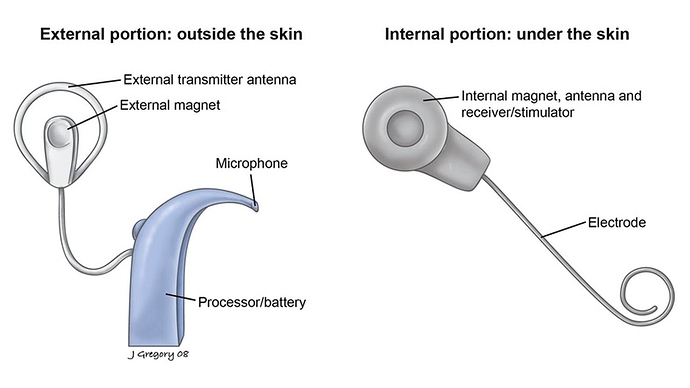I want one of these to put on the back of my skull. I’d then use a hat or headband to power and control it. I really want a fully integrated headset and am hoping that this works well enough to even allow people to hear it if I open my mouth! Would this even be possible? Would the buzzing make it not heal?
Also, how do cochlear implants use subdermal magnets and not get necrotic, crushed skin?
I’m pretty sure the magnet in center of the transmitter is suspended in the air by the larger round antenna housing so that it does not come in contact with the skin. The magnet in the receiver is also behind some housing, so the pull strength between the two is actually not very strong, it’s more an alignment thing. This prevents necrosis and also allows the external parts to be pulled off easily without damaging your scalp.
So would you want to put the piezo element in and then hook it up to an internal receiver coil, and then have an external transmitter coil in a hat headband?
Just as a side note, that dermalock technology is a bit different than the normal cochlear implants. The normal implants send an RF signal wirelessly to an implanted receiver which is connected to the cochlear nerve. These dermalock ones do not have a receiver implant, they just use an “abutment” to perform bone conduction from the outside.
It’s still really cool, and it’s probably closer to what Moonman was thinking of.
Yep, that’s basically the idea. I think it would be pretty cool to try at least. I’m going to probably pick up some super thin wire and try to make a paper thin speaker. Either that or buy the modules
That is a bone conduction screw, which doesn’t have electronics or magnets on the implant. It is for conducting sound vibrations from the bone conduction hearing device (which attaches to the exposed part of the screw) to the cheek bone. A cochlear implant works differently.
